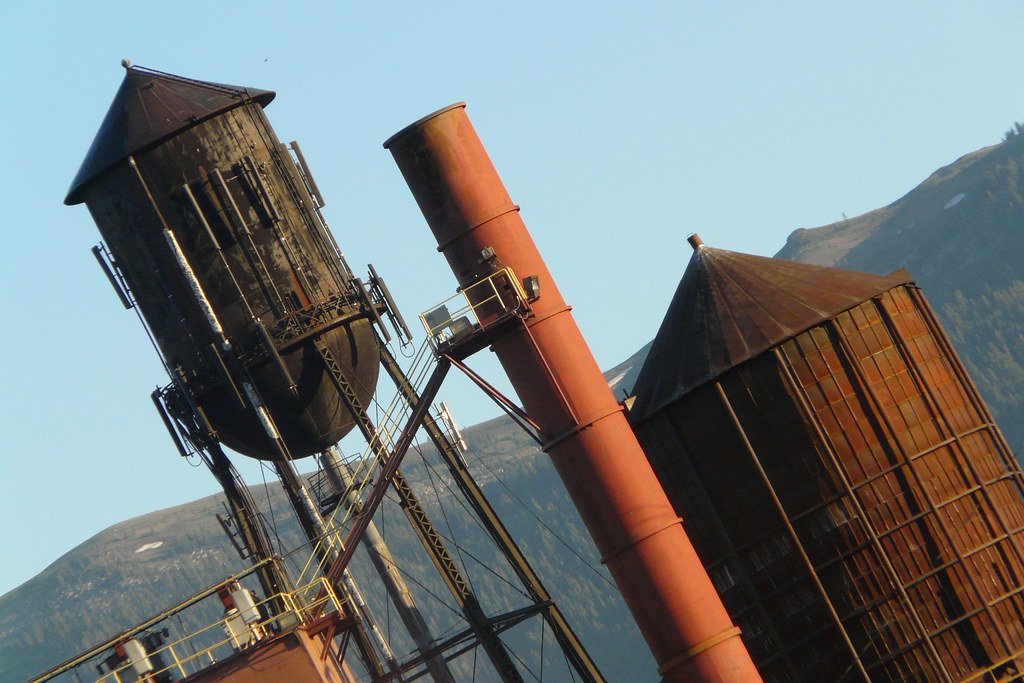Twelve Mile Circle received a visit from someone in Susanville, California (map) last week, landing right on the front page of the site. What an odd name for a town, I figured. It had to have a story. Who was Susan and why did she have a town named for her? Couldn’t the town founders have honored her surname instead?
Susan

Actually, the did, sort of, when first settled. The seat of government in Lassen County, California went by a different name originally, the even stranger Rooptown. The City of Susanville provided context:
“In 1853 the Honey Lake Valley was an oasis for emigrants, the first green grass and free flowing water after months of desert and dry. During that summer the Roop brothers built a cabin at the head of the valley, just west of the meadow where thousands of emigrants camped. That cabin would go on to act as a trading post, a seat of government and as a fort in the Sagebrush War of 1863.”
It made sense to call it Rooptown in a sense, although who would have wanted to live in a place called Rooptown? Soon the designation started to morph and take on the name of the nearby Susan River. Earlier settlers had named it for Susan Roop, the daughter of one of the Roop brothers, Issac Roop. The town prospered for many years because of its proximity to the Sierra Nevada’s abundant resources such as timber and minerals. It reinvented itself latter as a prison town, now the site of the High Desert State Prison and the California Correctional Center.
I considered the possibility of other mundane first names adopted as placenames. Indeed, they existed. Some of them derived from actual people while others appeared entirely by chance.
Joe
I found Joe Batt’s Arm on Fogo Island in Newfoundland and Labrador, Canada (map). If that wasn’t odd enough it had once been combined with two other local communities to form Joe Batt’s Arm-Barr’d Islands-Shoal Bay. That later became a larger grouping known as the Town of Fogo Island. “The town was incorporated on March 1, 2011 following the amalgamation of the towns of Fogo, Joe Batt’s Arm-Barr’d Islands-Shoal Bay, Seldom-Little Seldom and Tilting and a portion of the Fogo Island Region.” Got all that? However, 12MC only cared about Joe Batt’s Arm.
A websight devoted to Joe Batt’s Arm went into more detail [site no longer available]. I’ll warn readers now that it begins with the infamous “Legend has it”. Nonetheless, it amused me so here it is with the distinct possibility that the author may have taken some poetic license.
“Legend has it that the name of the community comes from the first European settler, possibly a deserter of Captain James Cook in the early 1750s. The community is shaped as an inlet and in those days it was called an ‘Arm’. The deserter – Joseph Batt settled here and the locals liked him so much that they gave it the name Joe Batt’s Arm.”
Twelve Mile Circle once posted an article about Captain Cook. Now the previously unknown possibly fictional deserter Joseph Batt had something to commemorate him too.
Bill

There were distinct differences in the geographic mentions of Bill in the United Kingdom and the United States. Bill in the UK referred to a narrow promontory or peninsula, like the bill of a bird. This specific usage appeared in the Online Etymology Dictionary. It derived from Middle English and “a common Germanic word for cutting or chopping weapons.”
People thought the beak of a bird resembled the curves of certain knives or axes, and the notion carried through to geographic designations. The most well known reference was Portland Bill at southernmost Dorset, England (map). Selsey Bill along the English Channel in West Sussex offered another tantalizing representation (map). I couldn’t find any other instances although I’m sure they must exist.
By contrast, Bill spots in the United States tended to reflect the names of actual people named Bill. For example, Negro Bill Canyon in Utah (map) got a bit of press attention in 2015 because of various perceptions of its potential offensiveness. [UPDATE: It is now Grandstaff Canyon]
I also found a town named Bill in Wyoming and one named Hollow Bill in Kentucky. I desperately wanted to discover the story behind Hollow Bill and sadly, I failed.
Some Others

The names just kept coming. I noticed a whole assortment of things called Dave (map) near the Wallonian city of Namur in Belgium. There was a village of Dave, a castle of Dave, a fortress of Dave and an island of Dave all along the river Meuse. Dave must have been quite a guy. Actually the name went back much further, having previously been Daveles, Daule, Davelle, Davelis, and Davre.
I particularly like Doug Well in South Australia (map). Not only was it Doug Well, presumably it was Dug Well.
Finally, one could always take a journey to Bob Island in Antarctica.
Completely Unrelated
Everyone knows how much I enjoy counting things. This marks article #1,234 posted on Twelve Mile Circle.

Leave a Reply